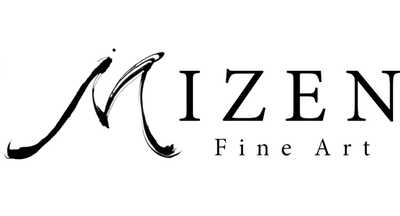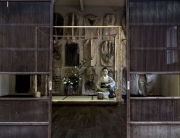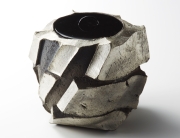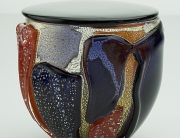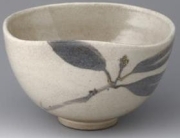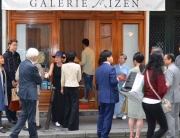Members of the Yakimono Paris Tokyo Gallery have again decided to host a major player in the field of Japanese art. Naoki Maeda is a unique artist that combines aspects of both urushi art with traditional Japanese yakimono art. Generally these two fields are considered somewhat separate, but Maeda-sensei is an unconventional artist to say the least.
Urushi refers to the Japanese sumac tree, which is cultivated to collect sap. In its basic form this sap is rather toxic, but it can be used to make a highly durable lacquer. This lacquer is used to treat tableware, instruments and numerous other items.
Urushi lacquerware can feature very elaborate designs that are layered between different sheets of lacquer.
The lacquer is also a very strong adhesive, which means that it can be used to bond different surfaces together. This property is invaluable in the field of woodworking since it can be used as a sort of glue as a result.
Making a single piece of art in this fashion can take weeks as layers are added, colored, adorned with various objects and then coated over again. The process is slow and tedious, but the end result is marvelous. Artists who wish to work with the medium need to have some real patience in order to ensure that they can actually work through the necessary drying times and get a good final product together.
This technique is what Naoki Maeda has started to really blend together with yakimono pieces. While some purists might balk at the idea, his pieces are really something to look at.
Lacquer pieces can feature any sort of themes that the artist wishes to add no matter how natural or whimsical they might be.
Based out of Shizuoka, Maeda continues to produce excellent pieces in several different media. It might help those who wish to appreciate his art if they had a better understanding of the underlying theories.
When someone wishes to produce a lacquer object they first start by making several incisions into an adult Japanese sumac tree. They collect a sort of yellowish sap from the incisions and then filter it. It is usually heat-treated and colored before being applied to the base material. Curing the application requires a drying time of around a day in a warm and humid closet.
During this time the urushiol turns into a clear and hard surface. This surface is waterproof. Once it dries negative reactions to the lacquer are far less common then when it is in a liquid state. This means that it can be safe for use in a variety of environments.

